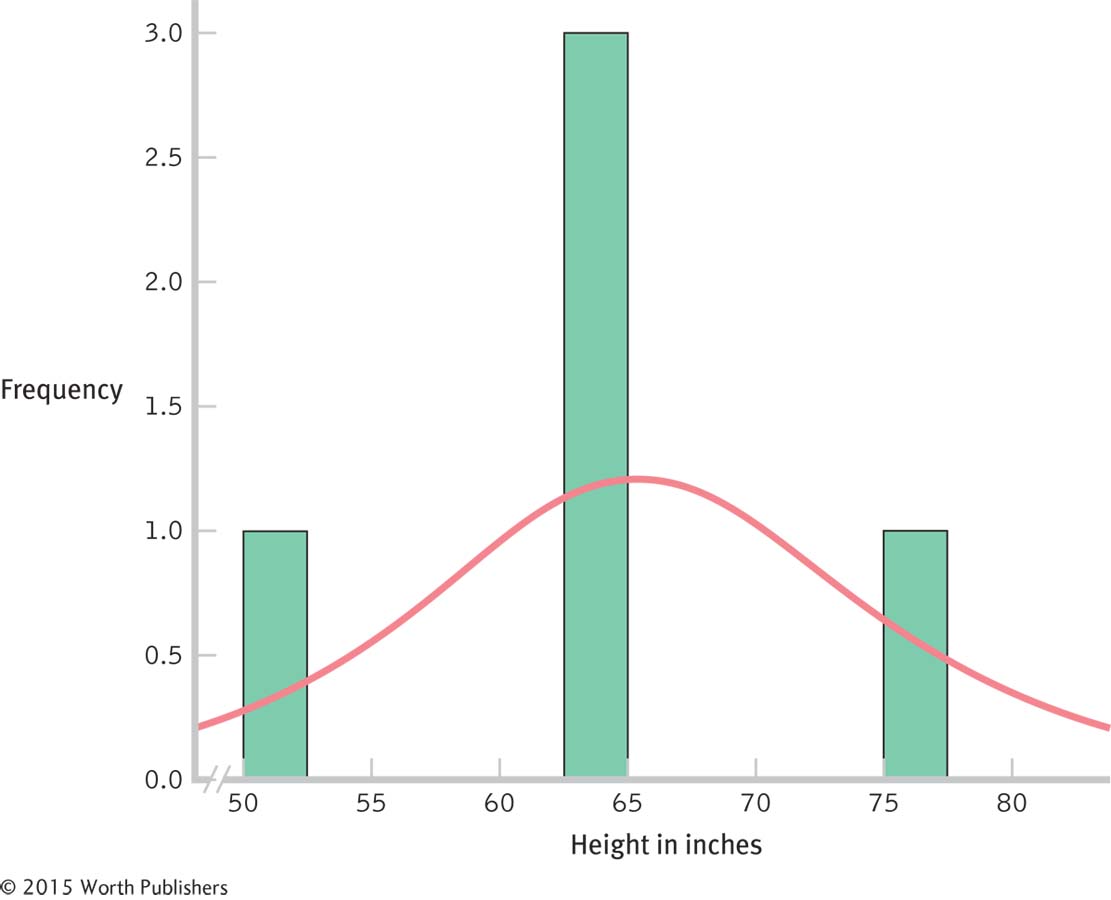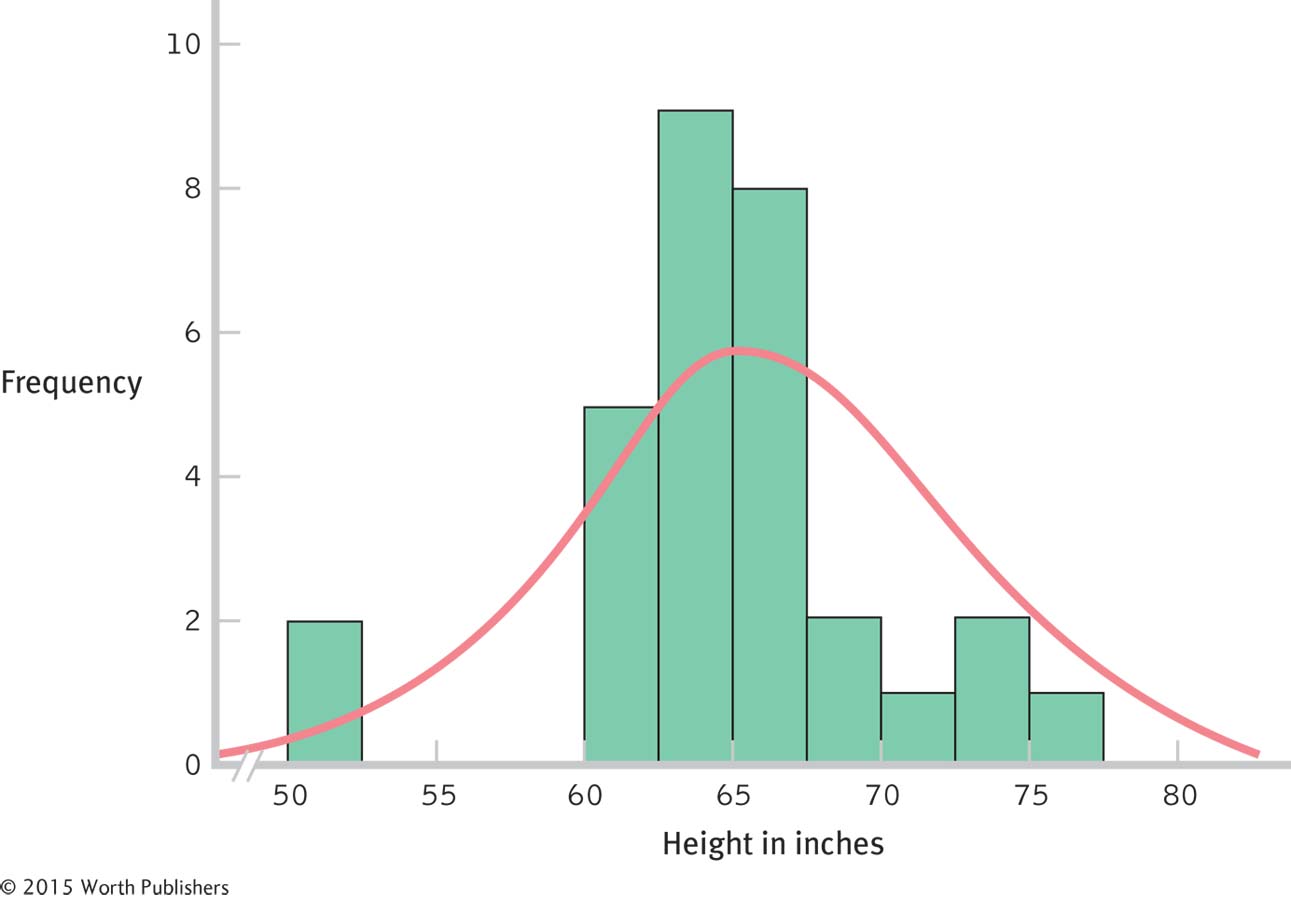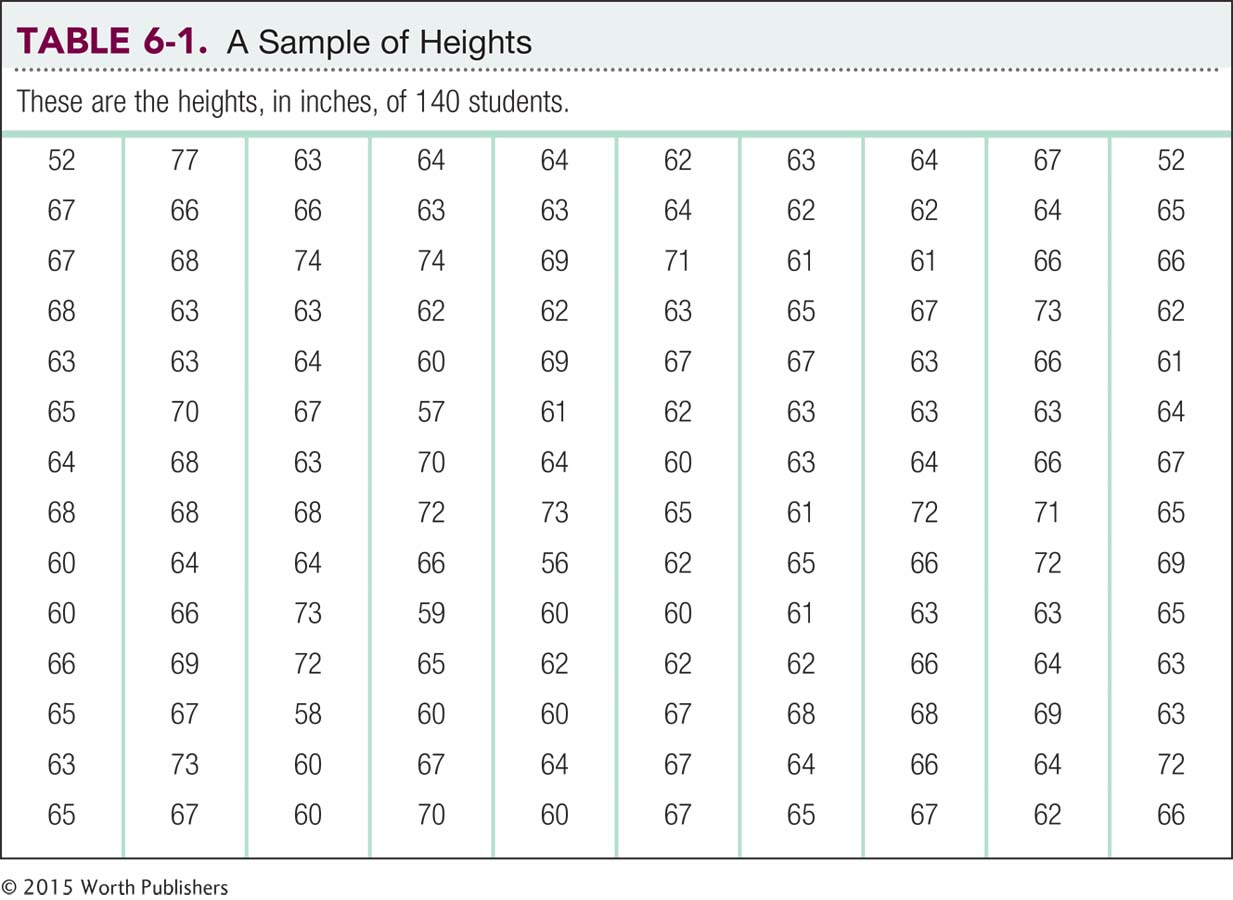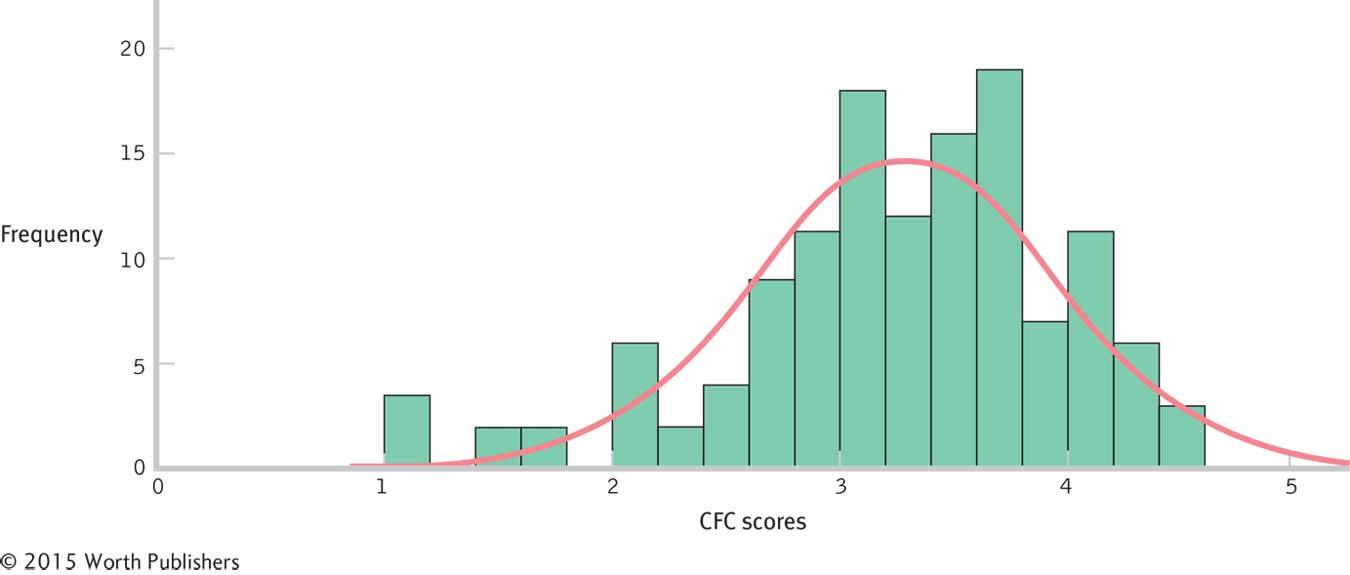6.1 The Normal Curve
EXAMPLE 6.1
In this section, we learn more about the normal curve through a real-
| 52 | 77 | 63 | 64 | 64 |
Figure 6-2 shows a histogram of those heights, with a normal curve superimposed on the histogram. With so few scores, we can only begin to guess at the emerging shape of a normal distribution. Notice that three of the observations (63 inches, 64 inches, and 64 inches) are represented by the middle bar. This is why it is three times higher than the bars that represent a single observation of 52 inches and another observation of 77 inches.

Sample of 5
Here is a histogram of the heights in inches of 5 students. With so few students, the data are unlikely to closely resemble the normal curve that we would see for an entire population of heights.
Now, here are the heights in inches from a sample of 30 students:
| 52 | 77 | 63 | 64 | 64 | 62 | 63 | 64 | 67 | 52 |
| 67 | 66 | 66 | 63 | 63 | 64 | 62 | 62 | 64 | 65 |
| 67 | 68 | 74 | 74 | 69 | 71 | 61 | 61 | 66 | 66 |
Figure 6-3 shows the histogram for these data. Notice that the heights of 30 students resemble a normal curve more so than do the heights of just 5 students, although certainly they don’t match it perfectly.

Sample of 30
Here is a histogram of the heights in inches of 30 students. With a larger sample, the data begin to resemble the normal curve of an entire population of heights.
MASTERING THE CONCEPT
6-
Table 6-1 gives the heights in inches from a random sample of 140 students. Figure 6-4 shows the histogram for these data.


Sample of 140
Here is a histogram of the heights in inches of 140 students. As the sample increases, the shape of the distribution becomes more and more like the normal curve we would see for an entire population. Imagine the distribution of the data for a sample of 1000 students or of 1 million.
These three images demonstrate why sample size is so important in relation to the normal curve. As the sample size increases, the distribution more and more closely resembles a normal curve (as long as the underlying population distribution is normal). Imagine even larger samples—
CHECK YOUR LEARNING
| Reviewing the Concepts |
|
|||||||||||||||||||||||||||||||
| Clarifying the Concepts | 6- |
What does it mean to say that the normal curve is unimodal and symmetric? | ||||||||||||||||||||||||||||||
| Calculating the Statistics | 6- |
A sample of 225 students completed the Consideration of Future Consequences (CFC) scale. The scores are means of responses to 12 items. Overall CFC scores range from 1 to 5.
|
||||||||||||||||||||||||||||||
| Applying the Concepts | 6- |
The histogram below uses the actual (not rounded) CFC scores for all 225 students described in 6-
|
Solutions to these Check Your Learning questions can be found in Appendix D.